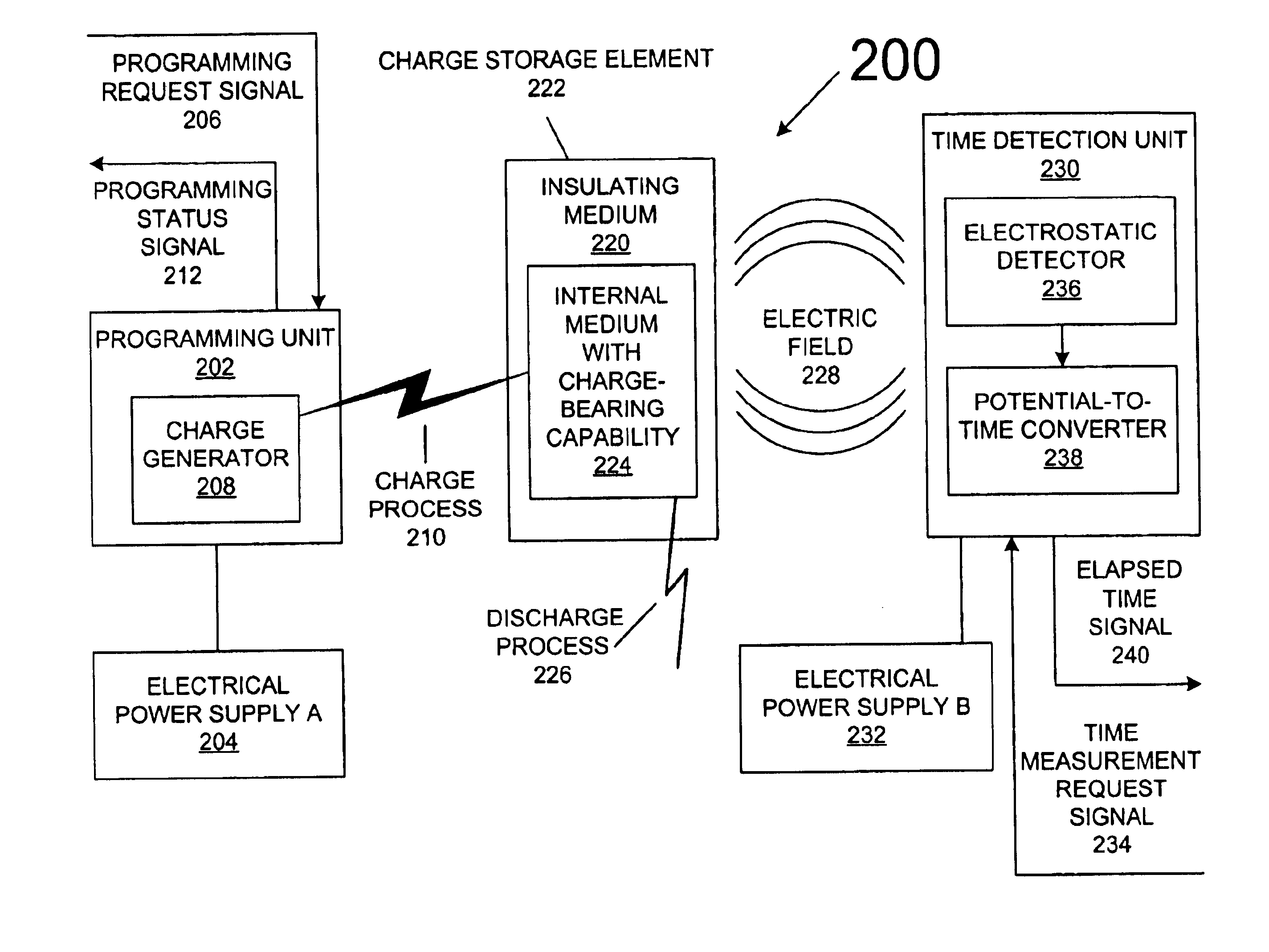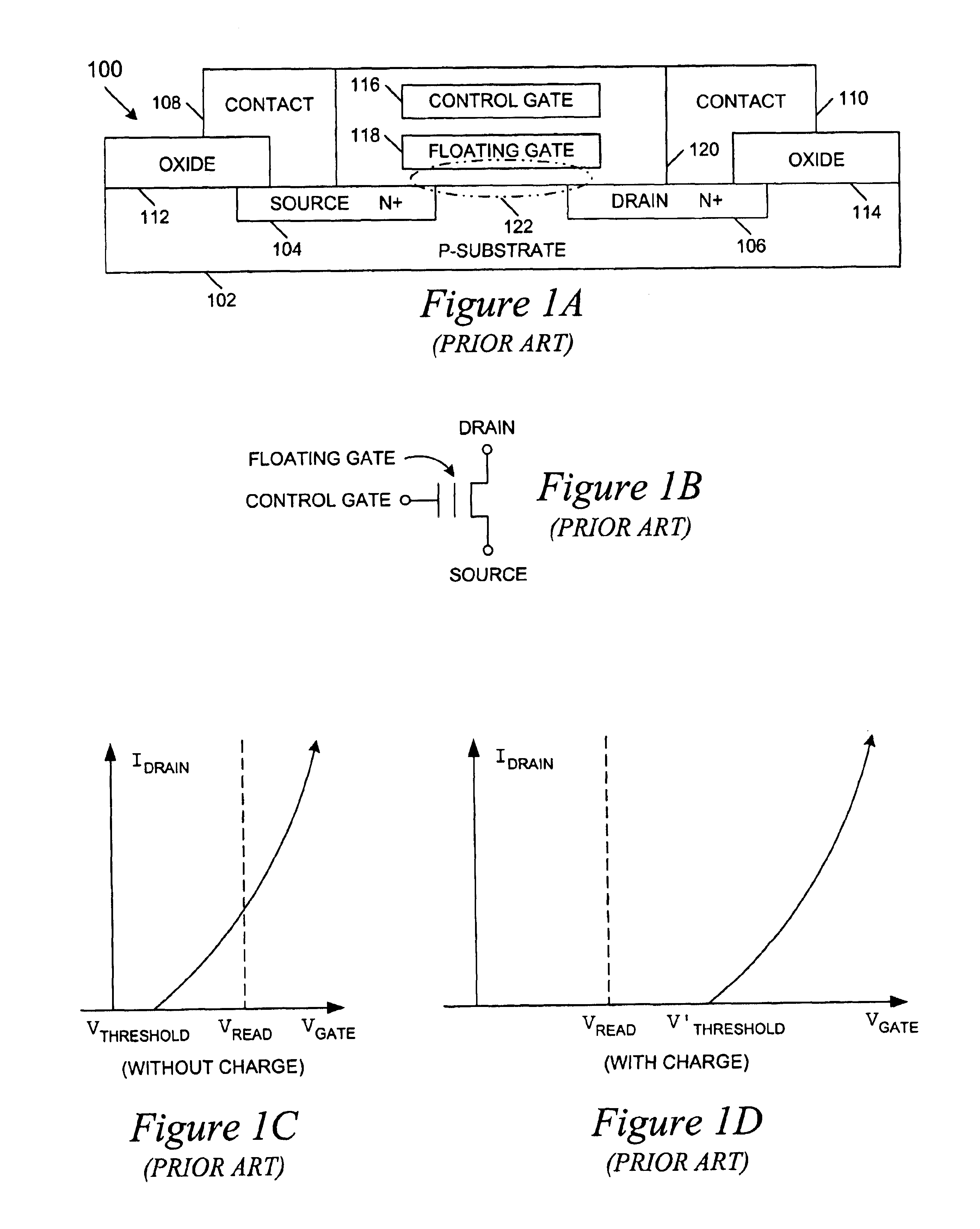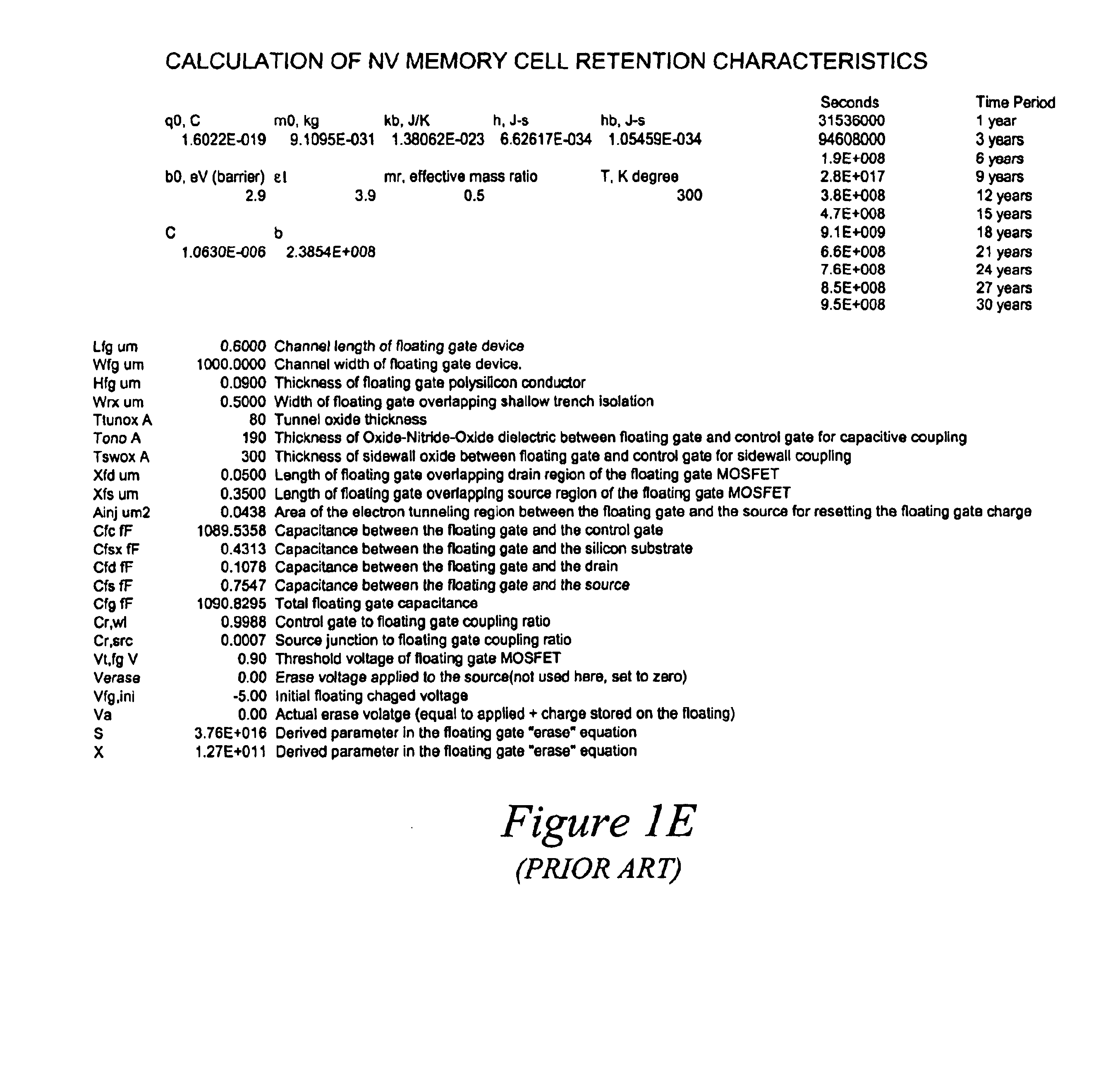Batteryless, oscillatorless, binary time cell usable as an horological device with associated programming methods and devices
a time cell and binary technology, applied in the field of horology, can solve the problems of imposing design restrictions on electronic devices, chemical batteries are relatively expensive, and can present potential chemical leakage and disposal hazards, and batteries tend to have a short shelf li
- Summary
- Abstract
- Description
- Claims
- Application Information
AI Technical Summary
Benefits of technology
Problems solved by technology
Method used
Image
Examples
second embodiment
the present invention describes the manner in which the present invention may be broadly viewed as covering multiple types of horological devices that operate according to the same principles described with respect to the first embodiment of the invention.
A third embodiment of the present invention extends the first embodiment by employing a set of time cells, each cell possessing a different discharge function, thereby providing a range of granularity for concurrently measuring multiple time periods. The retained electrostatic charges are observed by performing read operations on the time cells to determine whether the associated time periods have elapsed.
A fourth embodiment of the present invention extends the concept of using the floating gate of a floating gate field effect transistor as the insulated charge storage element for an horological device. Preferably, a programming transistor and a sensing transistor with a common floating gate are used together. The common, expanded ...
first embodiment
the present invention uses a modified non-volatile memory cell, called a time cell, as an horological device. Non-volatile memory devices, which are memory devices which retain data when power is removed from the memory device or from the system containing the memory device, are well known in the art of computer technology. Many different implementations of non-volatile memory are commercially available, and different types of non-volatile memory operate in different manners.
Certain types of non-volatile memory lie outside of the scope of the present invention because they do not incorporate a charge storage element. For example, programmable read-only memories, or PROMs, are read-only memories that can be written to or programmed only once, typically with special equipment that burns out fusible links in a network of logic, thereby setting a specific memory location to a desired logic level and establishing read-only data values. Hence, these types of memories store data without a ...
third embodiment
the present invention extends the first embodiment by employing a set of time cells as an horological device rather than a single time cell. In the first embodiment, a read operation is performed on a time cell that has been designed to reduce the threshold voltage of its transistor to a predetermined value within a predetermined period of time after it has been programmed, and the read operation can determine from the current state of the time cell whether or not the predetermined period of time has passed.
In the third embodiment, a set of read operations are performed on a set of time cells in which each time cell in the set has been designed to reduce the threshold voltage of its transistor to a predetermined value within a predetermined period of time after it has been programmed. In other words, each time cell in the set of time cells possesses a different discharge function from the other time cells in the set. Each time cell in the set decays differently over a different time...
PUM
 Login to View More
Login to View More Abstract
Description
Claims
Application Information
 Login to View More
Login to View More - R&D
- Intellectual Property
- Life Sciences
- Materials
- Tech Scout
- Unparalleled Data Quality
- Higher Quality Content
- 60% Fewer Hallucinations
Browse by: Latest US Patents, China's latest patents, Technical Efficacy Thesaurus, Application Domain, Technology Topic, Popular Technical Reports.
© 2025 PatSnap. All rights reserved.Legal|Privacy policy|Modern Slavery Act Transparency Statement|Sitemap|About US| Contact US: help@patsnap.com



